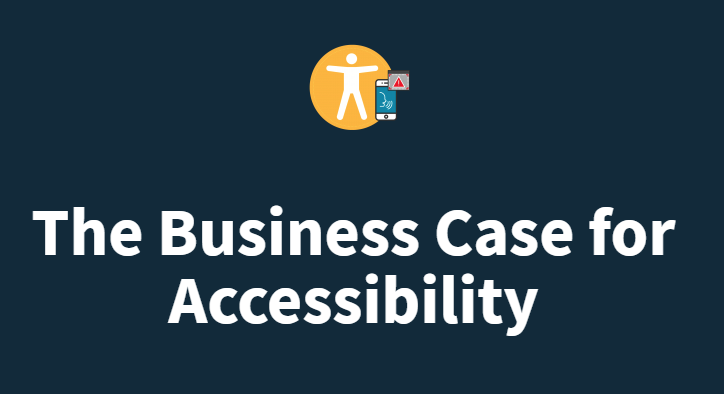
- Accessibility, while often a top buzzword, is important to keep in mind when building any experience.
We’ve all had some sense of this in our own lives—maybe you saw braille on the bathroom sign or you watched TV with corresponding captions on the little screen in a taxi on your way home from the airport.
If you’re still having a hard time thinking of examples, think about all of the ways that people perceive and process content and you’ll notice even more areas where this is present in your own world.
Great design sometimes makes these invisible to the naked eye, but the next time you are walking down the street look at different street signs and notice the colors being used: are you able to read what's being said or is it difficult because of the color contrast? The same is applicable to a digital property or looking at a website and seeing a header: does the color contrast make this easy to read?
So taking a step back, what really is accessibility (#a11y)? If we go by definition, accessibility is a “‘user’s ability to use products/services.”
When it translates to digital, accessibility involves two key issues:
How users with disabilities (and users with different abilities) access electronic information (websites, web applications, other digital content)
How web content designers/developers enable web pages to function with assistive devices used by individuals with disabilities
Not all resources are made with digital accessibility in mind, which can make using digital content difficult or impossible for all people. This is why the World Wide Web Consortium, better know as W3 created the Web Accessibility Initiative. Improving the experience not only benefits all people, but is the new normal and will yield benefits to overall business success, too. You might be asking yourself about the reasons for this, and just think: Accessibility promotes improved user experience (UX).
You can make sure you are doing this by providing:
A simple and easy page layout for users to understand how to follow page content (think of the different headers and hierarchy).
Clearly identifiable form inputs—Intuitive forms lead to increased engagement, submission, and data capture.
High contrast—to allow everyone to see the text on images. If you are not doing this, you are creating a confusing experience for people. Beyond text, this can relate to links, buttons, and icons. If it is important enough to be seen, it needs to be clear. (Mobile devices are a good example, as it is easier to see content outdoors with high contrast.)
The ability to search and read a transcript/caption to a video or online recording .
Make sure that content can be seen across and has high contrast in different lighting conditions.
Optimize title tags and add captions to video.
Use simple language, avoid jargon, un-named acronyms and unexplainable language—this makes it difficult and unappealing to people and makes it unusable for people with cognitive and learning disabilities.
Ideas for all audiences: some of the tech-savvy baby boomers are entering the senior age bracket, experiencing gradual declines to their hearing, vision, and mobility.
Adopting design thinking. (Learn more from Elise Roy’s TEDxMidAtlantic - “When we design for disability, we all benefit”.)
Bottom-line: Digital accessibility is useful for some, but necessary for all.
Some people cannot see text or have a hard time reading and rely on text-to-speech capabilities. It can even help if you are simply multitasking. In order for this to work, web applications need to be properly coded. This has the added benefit to businesses because it helps search engines index websites better, which in turn improves Search Engine Optimization (SEO).
By incorporating these changes, you could actually see cost savings on resources. Accessibility considerations at the beginning of a project can save time, money, and resources. (And applied accessibility best practices set a solid foundation for continued development.)
Ignoring these considerations is not only risky, but also potentially damaging for brand loyalty. Choosing to invest in business accessibility can: prevent potential legal fees, make your website easier to manage and enhance usability, all while potentially increasing your brand’s reputation.
Take a moment to step back and think of any improvements that your web application might need. And let us know how we can help you create an accessibility culture at your company.
The original version of this page was published at: https://www.phase2technology.com/blog/business-case-a11y
From engineering interconnected patient experiences to designing new digital platforms, our experience with hospitals and healthcare systems is extensive and touches on every facet of the business.
One of the most important things we do for our clients is to help shift the organization’s mindset from focusing on the project (the process) to thinking in terms of creating ...read more
Lightning Talknoun: A very short presentation lasting only a few minutes, usually given at a conference or similar forum. Known to inspire, spark, and ignite new ideas. What I ...read more
When it comes to digital accessibility, do you have new terms to learn, a never ending to-do list, and deadlines that make the process intimidating? There is a lot of fear and uncertainty ...read more
At this year’s DrupalCon in Pittsburgh, I not only had the pleasure of attending, but I also had the opportunity to speak on a panel: “Marketers Are Our Future; How To ...read more